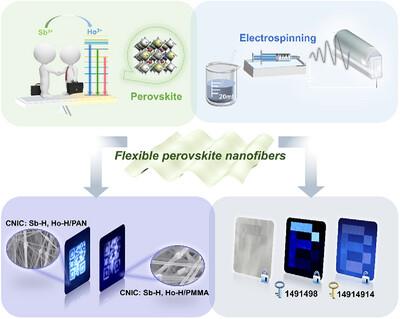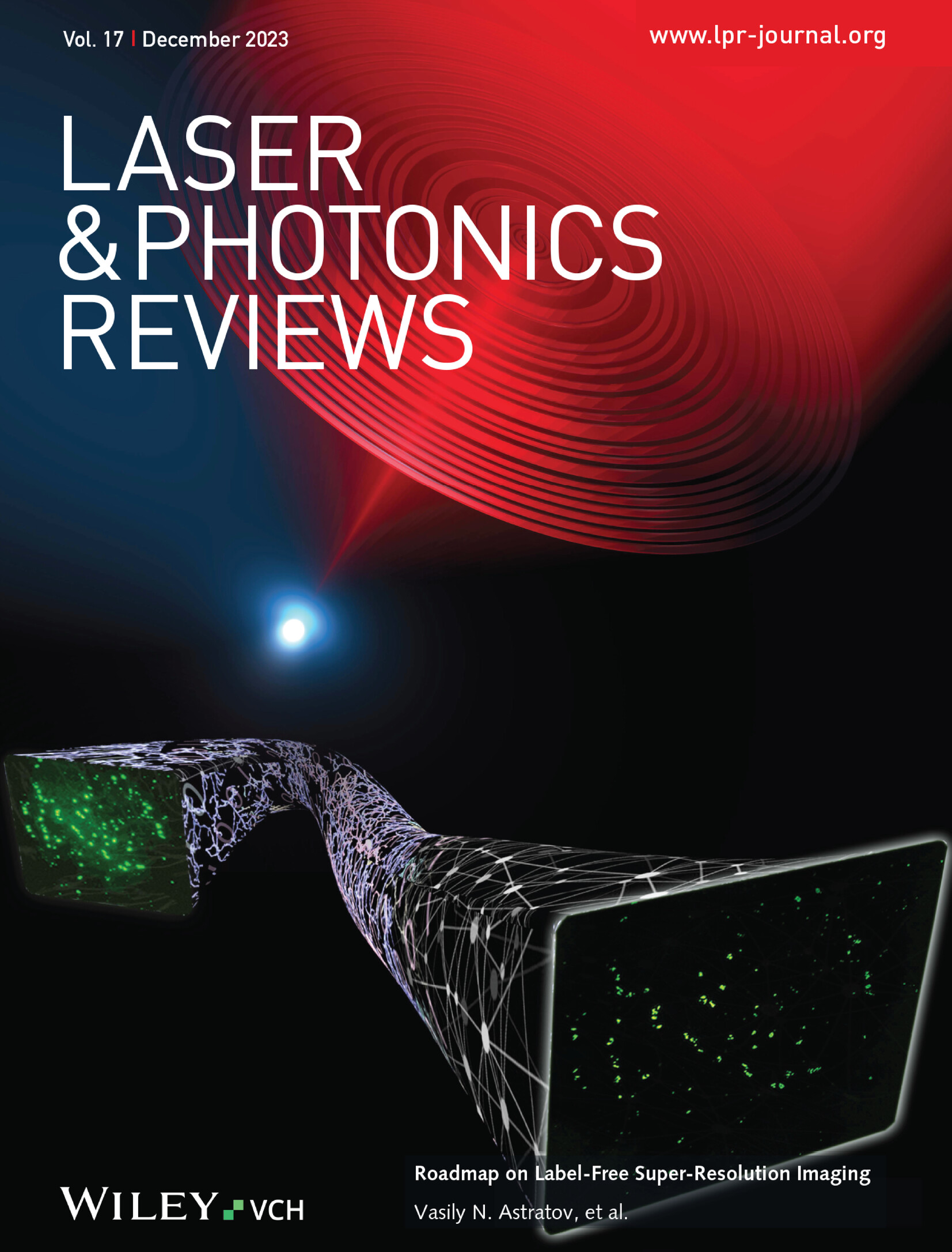Activate Reconstruction from Sb3+/Ho3+ Synergistic Doping Nanofibers for Interactive Information Encryption and Customized Display
IF 9.8
1区 物理与天体物理
Q1 OPTICS
引用次数: 0
Abstract
Driven by the escalating demand for cutting-edge materials in interactive encryption and customized display, the optimization of excitonic coupling mechanisms in perovskite-based luminescent systems has emerged as a pivotal focus in advanced materials research. Inspired by synergistic doping (SD), a photoswitchable energy transfer channel is realized utilizing the UV-responsive Cs2NaInCl6: Sb3+-Ho3+ (CNIC: Sb-Ho) phosphor. Benefiting from the self-trapped exciton of Sb3+, the visible blue luminescence of Ho3+ achieves excitation reconstruction through SD, with a sensitization coefficient from Sb3+ to Ho3+ in CNIC reaching two orders of magnitude. Notably, CNIC: Sb-Ho quantum dot is embedded into polyacrylonitrile (PAN) and polymethyl methacrylate (PMMA) fibers, respectively, and distinct color coordinate channels are created by altering the doping concentration and fiber matrix, thereby enabling the personalization and the customization of the desired colors with enhanced precision. Furthermore, excellent read-in performance under UV irradiation is achieved by screen-printing CNIC: Sb-Ho microcrystal on nanofibers and combining it with ACSII code, which endows nanofibers with UV-induced controllable shape programming behavior for interactive multidimensional information encryption. This work establishes an enhanced visual interaction framework through effectively integrating perovskite fluorescence tunability and nanofiber adaptive structures, thus opening new possibilities for the smart application of next-generation optical encryption technology.

求助全文
约1分钟内获得全文
求助全文
来源期刊
CiteScore
14.20
自引率
5.50%
发文量
314
审稿时长
2 months
期刊介绍:
Laser & Photonics Reviews is a reputable journal that publishes high-quality Reviews, original Research Articles, and Perspectives in the field of photonics and optics. It covers both theoretical and experimental aspects, including recent groundbreaking research, specific advancements, and innovative applications.
As evidence of its impact and recognition, Laser & Photonics Reviews boasts a remarkable 2022 Impact Factor of 11.0, according to the Journal Citation Reports from Clarivate Analytics (2023). Moreover, it holds impressive rankings in the InCites Journal Citation Reports: in 2021, it was ranked 6th out of 101 in the field of Optics, 15th out of 161 in Applied Physics, and 12th out of 69 in Condensed Matter Physics.
The journal uses the ISSN numbers 1863-8880 for print and 1863-8899 for online publications.

 求助内容:
求助内容: 应助结果提醒方式:
应助结果提醒方式:


